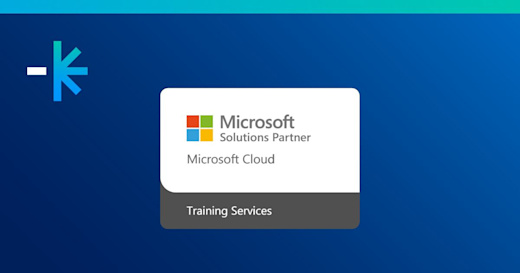Sydney, Australia, 27 July 2017 – DDLS, Australia’s leading IT training provider, today released key findings from its 2017 training survey which included respondents from multiple sectors. The purpose of the survey was to determine the motivations and decision-making trends behind training investment. Survey respondents included organisations that procure DDLS training courses. The majority of respondents (48%) were from organisations with more than 1000 employees.
Findings from the survey revealed that both employers and employees benefit extensively from training courses. When asked if certification or competency was the most important outcome from their training investment, 88% of respondents stated that competency outcomes had the greatest impact from attending training, while only 12% stated certification as having the most impact on their business.
Gary Duffield, DDLS Alliances Director, commented, “This clearly shows that the majority of those seeing training interventions are doing so in support of business strategy. Those rating certification higher will have been a combination of those seeking career development, and vendor partners who need certification to maintain their status.”
When questioned about the main drivers for training investment, not surprisingly increasing productivity, adopting new technologies and increasing job satisfaction and morale were at the top of the list. This is reflected in the popularity of DDLS courses around Office 365 and Azure. Gary believes that organisations are increasingly taking an agile approach to delivering new technologies and ensuring end user adoption is considered upfront rather than as an afterthought. Productivity gains are better achieved by having the right skills and tools.
At a time of digital disruption in the training industry, an overwhelming 90% of respondents preferred instructor-led classroom training. This was deemed to be the most effective method, as opposed to only 3% who favoured virtual instructor-led training and 7% who preferred self-paced e-learning.
While businesses recognise the benefits of a proficient staff group, 48% of respondents cited both budget and time as the two main barriers to training investment. Gary believes that these investments are justified as corporations will see a greater return and a more productive workforce once the correct training has been delivered. Given the feedback about virtual and e-learning, it is down to industry-leading businesses like DDLS to create solutions which help our clients learn more, faster.
DDLS has built specific services to mitigate the time spent out-of-office in training, such as DDLS Anywhere, a service that offers students the option to join a classroom from another DDLS classroom or from a location of their choice; DDLS Knowledge Hub, an online training resource repository; and DDLS Uschedule, which gives DDLS the ability to personalise its training schedule for students via DDLS Anywhere.
Finally, it is encouraging to see that 45% of organisations surveyed indicated that they invest in between three and ten courses per year for their staff. Organisations are well aware of the financial commitment required and this is supported by the fact that over 80% of respondents have signaled their intention to sustain their training investments throughout 2017/2018.










